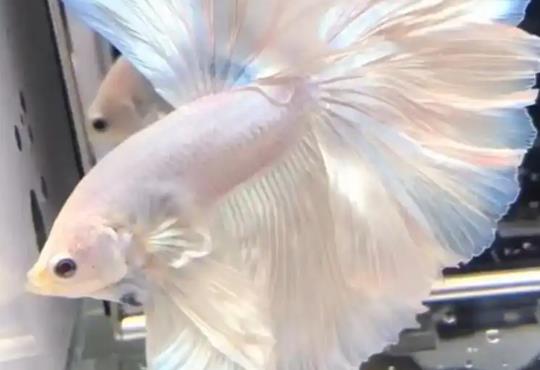To determine if a betta fish is happy, you can make a comprehensive judgment by observing its behavioral patterns, color changes, and interactive responses. Here are several key indicators:

1. Active Swimming State
A happy betta fish swims frequently, explores the aquarium environment, and shows curiosity and vitality. If it often stays near the water's surface with its dorsal fin naturally spread and body slightly tilted, this indicates it is relaxed and comfortable.
2. Vibrant Color Display
When in a good mood, a betta’s body color becomes more vivid and bright—especially when facing its owner, it may actively show off its 绚丽 (gorgeous) scales. Dull or faded colors may signal stress or discomfort.
3. Positive Interactive Reactions
A happy betta takes interest when its owner approaches, such as swimming to the aquarium edge, following finger movements, or even responding to interaction by spreading its fins or wiggling its body. It may also react quickly to gentle tapping sounds or feeding signals.
4. Healthy Appetite
A happy betta has a strong appetite, actively forages, and shows excitement during feeding (e.g., swimming rapidly toward food). Reduced appetite or refusal to eat may indicate health issues that require attention.
5. Relaxed Posture
When resting, a betta chooses a comfortable spot (such as near the water’s surface or among plants), with its body slightly sinking but breathing steadily and fins naturally extended. Unlike a weak "bottom-sitting" state (sticking to the tank floor with rapid breathing), a happy betta rests easily and briefly.
6. Playful Behavior
Some bettas interact with aquarium decorations, such as gently pecking at the thermometer or chasing bubbles. This behavior, similar to "playing," shows emotional happiness.
If a betta stays at the tank bottom for a long time, clenches its tail, hides frequently, or has dull colors, you may need to check the water quality, temperature, or its health. Regular observation and interaction are key to maintaining a betta’s happiness!
